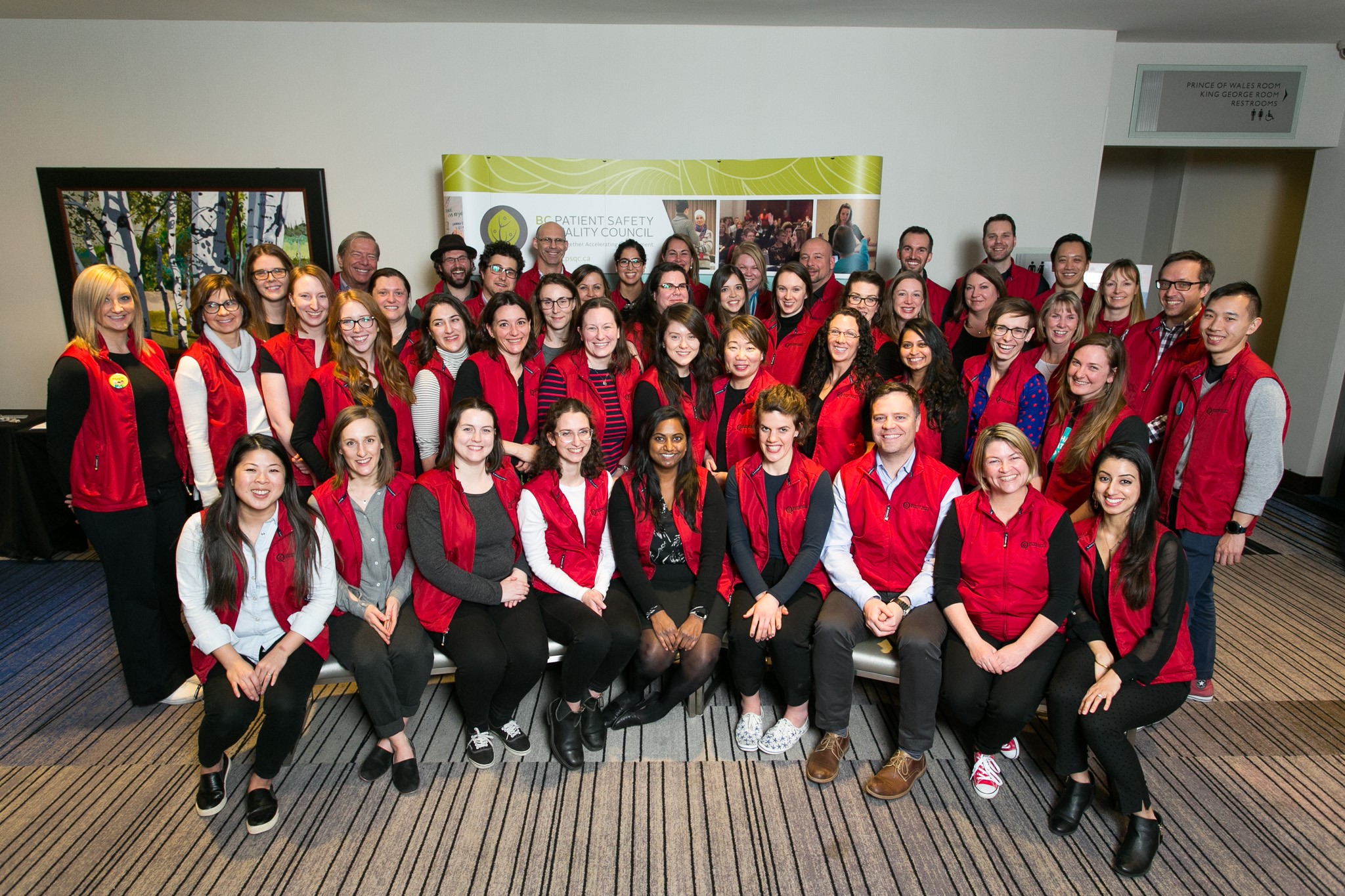Posted
Categories: Working Together for Better Health Care
2020 was a year of learning to do things in new ways: grocery shopping in a mask, socializing six feet apart, working from home and seeing your doctor through a computer screen. For many British Columbians, 2020 was the first time they encountered virtual care by connecting with a care provider through telephone, video, email or text. While relatively new in BC, it’s common practice in other parts of the world and one that has been on the Ministry of Health’s radar due to its potential to significantly improve access to care.
“Our Virtual Care Strategic Framework was actually delivered in October 2019, long before any of us thought a pandemic was coming. When COVID-19 struck, it gave new legs to virtual care,” explained Natasha Thambirajah, the Ministry of Health’s Director of Digital Health Policy.
Involving Patients
Over the summer of 2020, Natasha and her team members Nicole Rennie, Sihan Zhang and Lydia Tang gathered two patient advisory groups as the final step of a province-wide consultation of new policies to support the ministry’s Digital Health Strategy.
A Provincial Patient Advisory Group, comprised of 23 PVN patient partners across the province, and an Indigenous Virtual Care Advisory Group, comprised of seven Indigenous patient partners, were asked to provide feedback on three policies: Appropriate Use of Virtual Care, Patient Guide to Virtual Care, and Culturally Safe Virtual Care.
Patient partner Barbara Bienkowska had been advocating for virtually enabled care in mental health and addictions for years before the pandemic hit, recognizing the significant difference it could make in creating access to timely care and follow up.
“Navigating an under resourced and overwhelmed mental health system as a parent of an adult daughter with a life-threatening mental illness, has been an almost daily heartbreaking experience for many, many years. I wanted to join this working group to learn about the benefits and challenges of virtual care generally, and to do what I could to ensure that the unique needs of our most vulnerable population were not overlooked,” she said.
Elder Gwen Campbell McArthur participated in the Indigenous Virtual Care Advisory Group and contributed her cultural and intellectual knowledge from a patient perspective as a Métis woman, mother, former health care provider, Indigenous researcher, scholar and author. “We just couldn’t go on expecting to have virtual care and health care that was of a good quality, that was respectful and culturally safe for Indigenous people in BC, without having some kind of guidelines and terms of reference in place,” said Gwen on her motivations for taking part.
Zooming Together Line by Line
In a series of biweekly, 90-minute meetings between September 2020 and February 2021, the groups met via Zoom to review draft policies and provide feedback. Meeting virtually increased the geographic reach of the consultation, as ministry engagements are most often hosted in Victoria or the Lower Mainland. Using Zoom breakout rooms and staff facilitators also enabled the team to convene a much larger group than may have been possible in a face-to-face consultation.
“We didn’t just present a summary,” explained Lydia. “We would present the whole policy and walk through each paragraph. We went line by line. Patients had the opportunity to edit the wording, not just general content. Line by line might seem, on the face of it, like an awfully tedious way to do things, but every line actually does matter in policy.”
The approach, while intense, was appreciated by the patient partners. Gwen reflected on the skill with which the facilitators listened and captured comments. “As we were talking, Natasha was going ahead and changing everything but would say, ‘Woah woah woah, go back’ even though it was time consuming. She did it until we got the language right – until it reflected what was really important,” said Gwen.

Barbara also commended the team on its organization, scheduling and facilitating. “What was even more meaningful was how they genuinely seemed to respect and value our participation, even when some of us fumbled our words while trying to articulate our thoughts, went off topic, or repeated something that had already been said. It takes a lot of patience and skill to genuinely hear people and be able to extract the nuggets at the same time,” she said.
Culturally Safe Space to Discuss Cultural Safety
Appreciating the potential sensitivity of topics and experiences regarding cultural safety, the team created an Indigenous-only group of patient partners for the review. “Having that space was good because it allowed Indigenous patient partners to speak more comfortably about their experiences and to speak to each other. It provided more space for them to talk openly,” shared Lydia.
The Indigenous Virtual Care Advisory Group made significant contributions to improving the Cultural Safety Virtual Care Policy, embedding an Indigenous patient perspective throughout, from the way it was written to the ideas and concepts within it.
“It’s now much more accessible, easy-to-read and easier to understand. Policy principles and language were strengthened. Indigenous knowledge on the United Nations Declaration on the Rights of Indigenous Peoples, ceremonies and the diversity of Indigenous Peoples greatly helped in enhancing these concepts in the policy,” explained Nicole.
When reflecting on the work and how she hoped the policy would translate into the patient experience, Gwen shared that she would “Think about what words patients and families would want to hear, that would engage them and have them open to doing something on the computer screen that is so disconnected from the relational, in-person care that we are used to as Indigenous Peoples. Words that we as patients can understand at a time when we were perhaps at our lowest ever, or when we had our highest fear. Or words that we had heard from our Elders, from our parents, that we had taught to our children.
“It was important to make sure that people receiving care were treated in a respectful way, that they were getting the reciprocal kinds of give and take that you get in an in-person conversation. And that’s really tough in a video conference,” continued Gwen. “You know, people talk a lot. [Health care providers] will give you this whole description and spend the first 10 minutes describing everything and only leaving five minutes for the patient – and that’s not how it is for a lot of Indigenous people. We tell a story, and we need to tell our health care in that story format. It’s a very traditional way of doing that. And I wondered, how is that going to be reflected in this policy? But Natasha captured that really well,” she said.
Natasha added that “It was an extraordinary experience. I’ve been doing policy for 15 years. I’ve never seen a group of people pore so closely over word choice and discuss diplomatically with each other the meaning of the words and whether it’s convening the right intent with such an extraordinary degree of thoughtfulness.”
Words Of Wisdom
When asked if she has advice for other patient partners interested in policy engagement work, “Just do it!” was Gwen’s answer. “Let the word ‘policy’ be friendly to you. It is always changing, and it always needs fresh patient voices. My experience so far is that people are listening. And listening to silence too. There are messages you can get across in so many ways. But to be afraid of [policy/engagement] is to your detriment.”
On a similar note, Barbara says to patient partners, “Don’t feel intimidated to voice your questions or perspectives. You are an asset and your voice matters, even if your words come out a bit muddled.” She also pointed out the highly involved nature of policy work and the time and effort needed to do it well. In her view, the value of a meeting is related to the collective work of the individuals in the time between meetings. As such, she encourages patient partners to be prepared by reading all circulated materials and making a record of questions, concerns and ideas that surface. She also reminds folks to be familiar with and periodically revisit the terms of reference and be mindful of confidentiality requirements around meeting content and documents.
The Result: Person-Centred Policy
The feedback received from the patient partners was carefully reviewed by the digital health policy team and incorporated into the documents. The result is policies that are more inclusive, person- and family-centred, and reflective of provincial and Indigenous patient perspectives on empowerment and virtual care.
“Seeing [Minister of Health] Adrian Dix standing up there at a press [conference] saying, ‘We have consulted with Indigenous communities, and we have new virtual care for First Nations and Indigenous communities coming’ – that gave me a sense of accomplishment,” said Gwen. “Knowing that my voice was heard. Knowing that the voice he was hearing/reading, were words from the committee that I was involved in. Some of them even mine. Even if no one else knows they were mine – I do.”
And according to Barbara, “The important takeaway from all of this is that we were given pretty free rein to give voice to anything that we felt could lend value to the work and improve the quality and value of the policies and guidebook. The value came from the collective thoughtfulness, commitment, skill sets and life and health experience of a group of caring people.”
The final policies are now under review and slated for public release in 2021. With new provincial policies in place, the Ministry of Health and health care providers across the province will continue to work to improve the delivery and accessibility of virtual health care. They hope to continue its use in the post-pandemic era, where a combination of in-person and virtual care might best suit the needs of British Columbians.
This story was featured in our 2020/21 Annual Report. Read more like it here.


